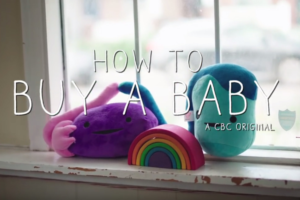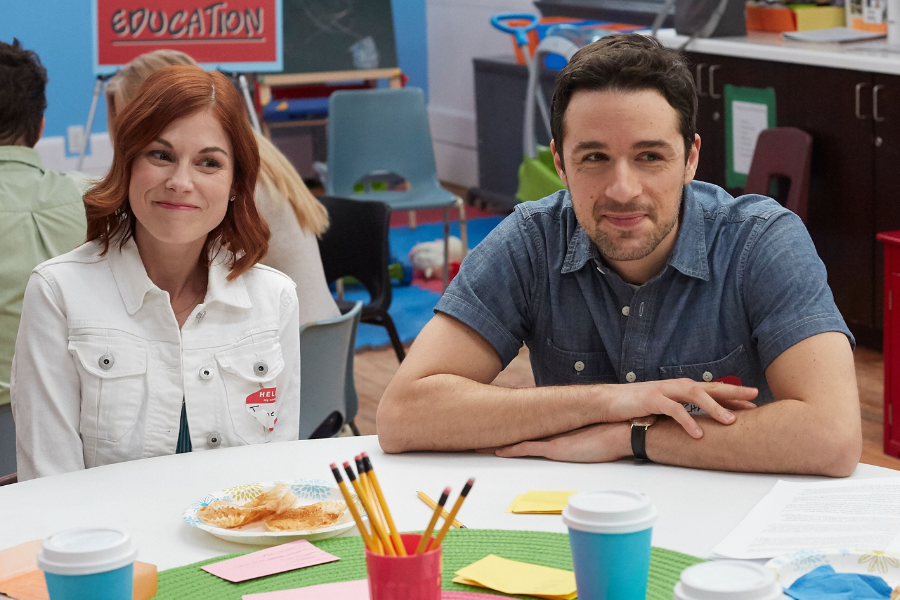Infertility is a journey many couples face in silence, often shrouded in misconceptions and emotional challenges. Wendy Litner’s groundbreaking CBC series, How to Buy a Baby, sheds light on this common yet rarely discussed experience. The show not only raises awareness about infertility but also uses humor to navigate the often-painful path to parenthood. For many Canadians, it’s a relatable and refreshing perspective on a topic that’s long overdue for open conversation.
Reflecting on Personal Fertility Journeys

Watching the trailer for How to Buy a Baby, I couldn’t help but see parts of my own fertility struggles mirrored on screen. Like countless other women, I’ve taken unexpected detours on the road to parenthood. Wendy Litner’s How to Buy a Baby resonated deeply, reminding me of those early morning visits to an infertility clinic when I was thirty-five—considered “geriatric” in the world of reproductive medicine. These visits, designed to monitor my cycles before heading to work, became a routine I never anticipated.
The walls of the clinic were covered with baby photos, a stark reminder of the end goal. Yet, I often found myself questioning whether these images fostered hope or inadvertently added to the emotional toll. For anyone who has walked this path, Wendy Litner’s How to Buy a Baby captures these moments with authenticity and nuance, making it both relatable and thought-provoking.
Diagnoses and the Road to Parenthood
Having been diagnosed with polycystic ovary syndrome and endometriosis in my twenties, I had almost resigned myself to the idea that natural conception might not be possible. My eventual pregnancy came as a surprise to both my doctors and me, but the memories of those clinic visits linger. The surreal, dehumanizing atmosphere of being reduced to a pair of ovaries, with self-worth seemingly tied to the number of follicles, is something Wendy Litner’s How to Buy a Baby portrays with striking honesty.
Breaking the Silence on Infertility
Wendy Litner’s own experiences with infertility heavily influenced How to Buy a Baby. The series fills a significant gap in media representation, addressing a topic that affects one in six Canadian couples. Despite its prevalence, infertility remains a taboo subject in many social circles. Litner recalls feeling isolated during her journey, surrounded by pregnancy announcements on social media while navigating her own colossal struggle. “When I was going through infertility, nobody was talking about it, at least not in my circle,” Litner shares. How to Buy a Baby aims to normalize these conversations, offering a sense of solidarity to those who often feel alone.
The Heart of the Series
The show follows Jane (Meghan Heffern) and Charlie (Marc Bendavid), a thirtysomething couple determined to become parents. After realizing that the “fun way” of conceiving isn’t working, they turn to IVF. While they try to maintain a lighthearted approach, the emotional weight of infertility soon becomes overwhelming. Wendy Litner’s How to Buy a Baby captures the couple’s struggles with honesty, humor, and compassion, making it a unique addition to the television landscape.
Finding Humor Amidst the Struggle
What sets How to Buy a Baby apart is its darkly humorous tone. Wendy Litner’s ability to find laughter in difficult moments is a testament to her resilience. “I cope with everything through humor,” Litner explains. “When my husband and I were going through this, we just made the decision to find the funny in it. I mean, having to squeeze your fat and have your husband give you injections just feels ridiculous.” This approach not only makes the series more engaging but also helps viewers navigate their own emotions.
Representation Matters
Infertility is a deeply personal experience, yet Wendy Litner’s How to Buy a Baby highlights its universality. By bringing this topic to television, the series helps dismantle the stigma surrounding infertility. For many viewers, seeing their struggles reflected on screen provides validation and comfort. Litner’s decision to tackle this subject with humor ensures that the conversation is both accessible and impactful.
A Cultural Shift in Storytelling
Historically, infertility has been absent from mainstream media narratives. Wendy Litner’s How to Buy a Baby marks a cultural shift, encouraging more open discussions about reproductive health. By normalizing these conversations, the series paves the way for greater understanding and support. For those who’ve felt isolated by their experiences, How to Buy a Baby serves as a beacon of hope and solidarity.
The Emotional Impact of Infertility
Infertility is more than a medical diagnosis; it’s an emotional rollercoaster. Wendy Litner’s How to Buy a Baby captures this complexity, from the initial shock of the diagnosis to the emotional highs and lows of treatment. For couples like Jane and Charlie, the journey to parenthood is fraught with challenges, but their resilience shines through. Litner’s portrayal of these struggles is both heartwarming and heartbreaking, making the series a must-watch for anyone navigating similar experiences.
Humor as a Coping Mechanism
One of the most compelling aspects of Wendy Litner’s How to Buy a Baby is its use of humor as a coping mechanism. Infertility can be a heavy topic, but Litner’s approach ensures that the series remains both entertaining and relatable. By finding humor in the absurdities of the process, Litner offers a fresh perspective on a topic often weighed down by stigma and silence.
A Call for Compassion and Understanding

Through How to Buy a Baby, Wendy Litner encourages viewers to approach infertility with compassion and understanding. The series highlights the importance of support systems, both within relationships and in broader social circles. For couples like Jane and Charlie, the journey to parenthood is made more bearable by their ability to lean on each other and find humor in the darkest moments.
The Legacy of Wendy Litner’s Work
Wendy Litner’s How to Buy a Baby is more than just a television series; it’s a cultural milestone. By bringing infertility into the spotlight, Litner has created a platform for dialogue and awareness. Her work challenges societal norms and encourages viewers to confront their own biases and assumptions about infertility. In doing so, she has paved the way for a more inclusive and compassionate understanding of reproductive health.
A Message of Hope
At its core, Wendy Litner’s How to Buy a Baby is a story of hope. Despite the challenges and setbacks, the series emphasizes the importance of perseverance and resilience. For couples navigating infertility, this message is both empowering and inspiring. By sharing her own experiences, Litner offers a sense of solidarity and reassurance to those who may feel alone in their journey.
Conclusion
Wendy Litner’s How to Buy a Baby is a groundbreaking series that tackles infertility with humor, honesty, and heart. By bringing this often-taboo topic into the spotlight, Litner has created a platform for dialogue and understanding. The series’ darkly humorous tone ensures that it remains engaging and relatable, while its poignant moments highlight the emotional depth of the infertility journey. For anyone who has experienced infertility or knows someone who has, How to Buy a Baby is a must-watch. It’s a reminder that even in the darkest moments, there’s room for laughter, love, and hope.
Discover compelling stories and trending news from around the world at StorySecond.com.











